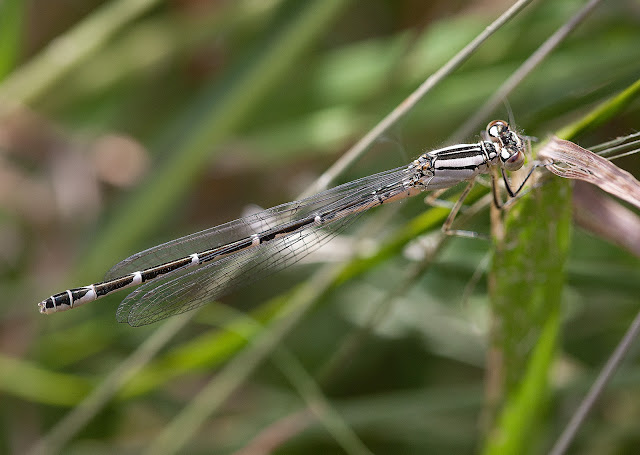 |
| Canon 1Ds MkIII, Canon 100mm L-series prime macro lens, f/4, 1/800th sec, ISO 640 |
20160714
It's a sign...
This fly pretending to be a bee clearly decided it needed to underline its credentials by settling on an information board offering details about the real thing. Picture captured by my son, Jack.
White-Lipped Snails (Cepaea hortensis)
I'm sure he won't mind my posting it, but this shot was actually taken by my son, Jack, on his first foray into macro photography. I'm biased, of course, but I think it shows a terrific sense of image composition and the bokeh works well around the leaf and the two shells that appear to belong to White-Lipped Snails (Cepaea hortensis), although – as always – I'm happy to be corrected on that.
 |
| Canon 1Ds Mk III, Canon L-series 100mm prime macro lens, f/2.8, 1/250th sec, ISO 400 |
Immature female White-legged Damselfly (Platycnemis pennipes)
Not the best of shots (I couldn't find an angle where the background was cleaner) but this beautiful damsel is a new one to me, having never seen one before here in North Norfolk. I'm terrible at identifying damselflies, but I'm confident this is an immature female White-Legged Damselfly (Platycnemis pennipes). According to the experts at Dragonfly Days, at this stage they are "often referred to as the form lactea when they appear a creamy colour with just a few black abdomen markings; as they mature they will turn a rather weak or washed out shade of yellowish-green with slightly stronger black segmental joint markings."
 |
| Canon 1Ds MkIII, Canon L-series 100mm prime macro lens, f/5, 1/320th sec, ISO 400 |
Common Blue Damselfly (Enallagma cyathigerum)
The first keeper from a morning spent introducing my teenage son to the delights – and the challenges and frustrations – of natural world macro photography. While we were blessed with bright sunshine, there was also a constant blustery wind that made focusing tricky. This stunning Common Blue Damselfly (Enallagma cyathigerum) helped enormously by remaining on this stalk of grass for 15 minutes or longer. I suspect the reason for that is that it appears to be consuming an aphid.
 |
| Canon 1DS MkIII, Canon 100mm L-series prime macro lens, f/5, 1/320th sec, ISO 400 |
 |
| Canon 1DS MkIII, Canon 100mm L-series prime macro lens, f/5, 1/125th sec, ISO 400 |
Subscribe to:
Posts (Atom)
